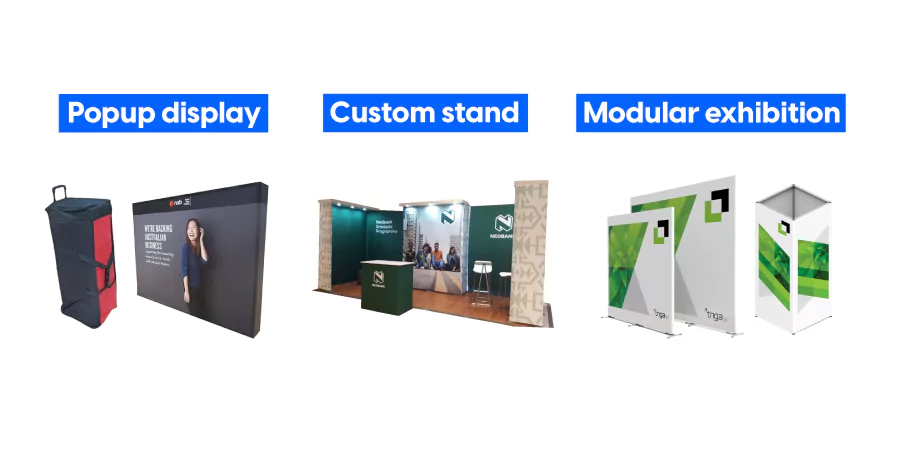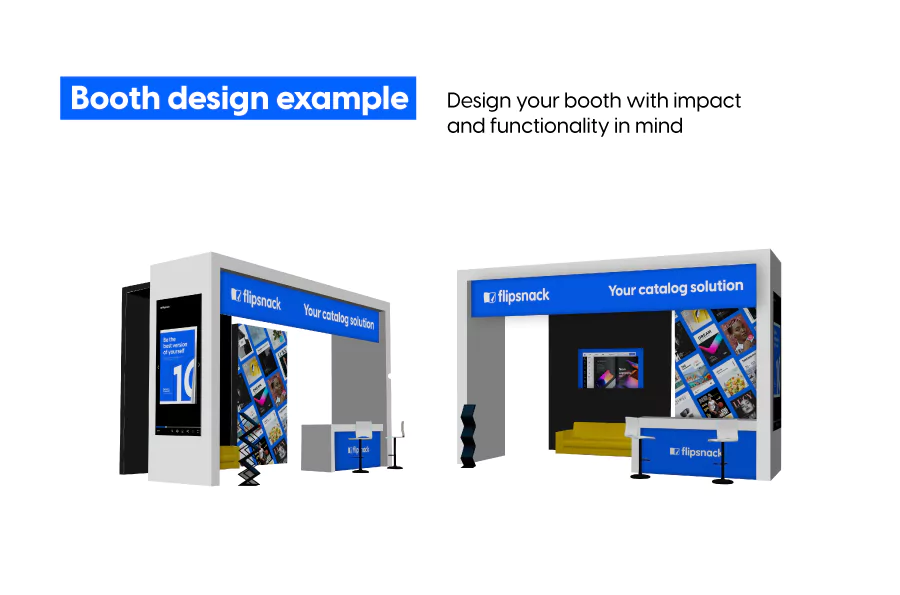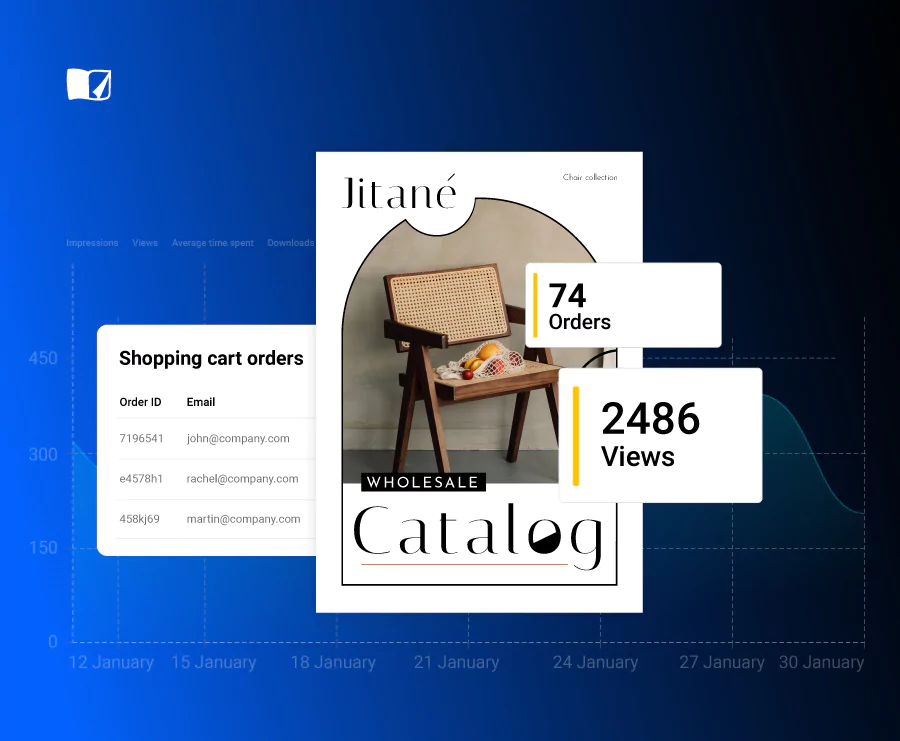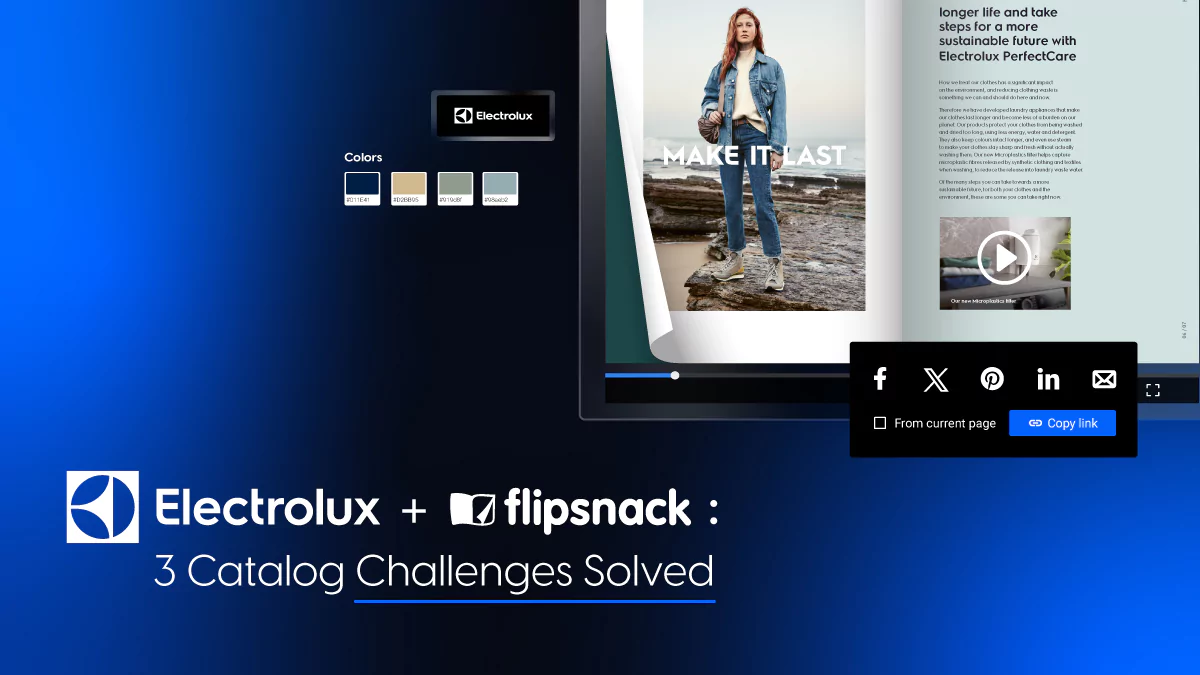How to reduce trade show costs for your wholesale company (in 2024)
The reality is that if your wholesale or manufacturing company doesn’t participate in trade shows (or other similar events), it can’t reach a particular group of partners that do attend. Trade shows are a proven marketing strategy because you get to create relationships with your audience in person.
You get to know them better, what they are looking for in a manufactured product; and how to properly cater to their needs. There are a lot of ways in which you can do that. Through seminars held at trade shows, one-on-one business appointments, and general networking with other professionals.
Table of contents
A trade show is an event organized by different industries where professionals meet to present, demonstrate, and discuss services or products.
The obvious benefit is finding new partners or new potential customers. But trade shows are also important because they let you in on trends and what you should be implementing in your own business. Based on what we have discussed so far, it’s safe to say that it would be a real missed opportunity not to take part in such events.
However, even though trade shows are extremely important for manufacturers, small and large, they come with a huge cost. Some reports of expense breakdowns show that you need a budget of roughly $42k to put the spotlight on your business at such an event.
If you are a mid-manufacturing company or even a larger company, both are interested in cutting down this cost without compromising on results. How can you do that more specifically?
In this article on how to reduce trade show costs, we break down all the different expenses that a trade show ticket includes and where you can work smarter and cheaper, of course.
The costly components of trade show participation
We talked about “how much does it cost to attend a trade show event”. Now it’s time to see what things and components a manufacturer or wholesaler needs to spend money on.
Before we list the different components of trade show participation, it’s important to set a budget from the beginning. Otherwise, expenses get out of hand quickly and without realizing it. If it happens to go over budget even after implementing the tips presented in this article, you might consider a smaller booth space to begin with.

The most expensive factors of trade show participation are as follows:
- Booth space rental fees (35%)
- Exhibition stand (15%)
- Show services (13%)
- Travel and accommodation expenses (16%)
- Printed promotional materials and collateral (10%)
- Shipping and logistics (11%)
1. Booth space rental fees
The trade show booth rental cost is one of the biggest expenses a trade show participation includes. The bigger the booth, the bigger the cost to rent it. It’s important to consider that the booth space placement also plays a role in price: the booths that are near the entrance will be more expensive.
If we want to talk specific numbers, the industry average price in the USA for the booth space rental ranges from $100 to $150 per square foot. A practical thing you can do in order to save money is to plan ahead and take advantage of early discounts given for renting booth space.

2. Exhibition stand
There are three exhibition stand layouts you can choose from: popup display, custom stand, or modular exhibition. Depending on what you choose, it will cost you more or less. Of these three options, the cheapest would be the popup display stand or medial walls. You can easily set them up with no extra cost for a logistics team. Especially if this is your first time attending a trade show, you don’t need to go all out with choosing an extravagant exhibition stand.

There are other ways to draw attention to your booth. First on the list is creating digital interactive catalogs that showcase your products better. This will allow your business to differentiate from the competition, a digital catalog is a great way to hook potential partners.
3. Show services
This item is often overlooked by those planning to exhibit at a trade show because it’s not the type of expense you first think about. Show services include WiFi expenses, electricity and utilities, carpet rental, cleaning, photography, and security. Some venues will cover some of these
expenses, but the general experience is that your company has to budget for them.
4. Travel and accommodation expenses or staff costs
Your company should consider the expense of traveling and accommodation before deciding on the number of employees it sends to a trade show event. The staff you choose will be the most important marketing and sales assets during the event. They will represent the company, so they have to know the strategies, their products, and different networking methods in order to make the most out of their participation. How is that measured? Generally, through the number of emails gathered from other participants.
How many people should you have for one booth? For the sake of an example, there is 1 person for every 4.5 sqm. If your booth measures 3×3 sqm, you can send 2 people for a 6×3 booth, 4 people, and so forth.
The general items your company needs to budget for: training staff before attending an event, transport and accommodation, food and entertainment, and specific attire; if you think it’s necessary. Some companies opt for one branded clothing item per employee since that is typically enough to represent the company properly.
5. Printed promotional materials and collateral
This factor might break your company’s bank if you participate in more than one trade show event annually. Trade show marketing is a huge part of any wholesaler or manufacturer’s strategy, but it does add up very quickly. Luckily, there is a much more cost-effective and even more immersive way to present your products; with digital interactive product catalogs.
Usually, companies tend to spend anywhere between 5-10% of their tradeshow budget on printed brochures and catalogs. There is a lot of talk about different printing settings you should be aware of, such as laminating your materials. Or perhaps invest in a higher-quality printer so your marketing assets don’t look like you printed them from your iPhone to an HP printer.

If you have a graphic design team in-house, your digital advertising costs will actually be decent. You’ll need to create different designs to promote your appearance at said event, a design for ticket admissions for clients, and perhaps trade show magazine ads.
And, of course, I haven’t forgotten about digital catalogs and digital brochures. But I have prepared a dedicated section where we talk all about digital marketing materials. I’ll discuss how to leverage them not only to lower trade show marketing costs, but also to gain a competitive edge.
6. Shipping and logistics
In terms of shipping costs, you may be able to strike a good deal with your exhibitor. This way, you don’t overpay another company to do the same thing. To ensure an even lower cost, you can rent the exhibition stand. Use it to showcase your brand based on an existing layout that you might be able to collect in person.
Opting for a pop-up display or a modular exhibition stand could result in significant cost savings on transportation and storage. Some of the reasons are that some companies have lightweight stands for renting, which pack down into portable carry bags. As I previously mentioned, this eliminates the need for a logistics company.
Moreover, since the stands themselves are very lightweight, you don’t need to pay for storage space. Just bring them with you when setting up your trade show booth. If, however, you opt for custom stands, these are some aspects for which you will need to allocate a budget: shipping, storage, customs costs, and insurance.
Tips for cost-effective trade show participation
It’s clear that by doing some simple math, any wholesale or manufacturing company can easily spend around 10k to participate in a trade show. What are some actions you can take when planning your trade show attendance to reduce the tradeshow budget?
- Strategic booth design to optimize costs
- Digital catalogs: a budget-friendly alternative to print
- Embrace eco-friendly giveaways
Let’s go through each tip and see what it entails specifically.
1. Strategic booth design to reduce costs
Successful booth design starts with your audience. So before you task your graphic design team with creating a “stunning, eye-catching” layout, stop for a moment. Ask yourself: what is the main message that I want to convey, and who is my specific audience? How do you expect them to interact with your booth, and what actions should they take after they leave?
Answering these questions will already help you with making design decisions in the following steps. Then, you have to choose your booth size and location because that influences your budget. You may have numerous alternatives for booth types, such as inline, island, peninsula, or corner, depending on the trade show.
While a corner booth could provide increased visibility and traffic, it also increases noise and competitiveness. Along with these factors, you should think about the trade show floor’s layout, the flow of people, and how close it is to nearby amenities or attractions.

And thirdly, design your booth with impact and functionality in mind. Create a design that attracts attention and a functional space to encourage interaction. A practical way to achieve this is to use clear and concise messages. Do this through graphics that focus on your benefits and your unique products and services.
If you want to have a chance to optimize your booth budget, you must plan ahead, compare prices, and look for package deals. There are modular and reusable components that help save money and time; instead of buying and transporting equipment that you’re probably only going to use once. Lastly, but most importantly, digital and online tools reduce your paper and printing costs considerably. Let’s see what you might be missing out on.
2. Digital catalogs: A budget-friendly alternative to print
Digital catalogs have one of the biggest impacts on reducing your trade show costs; since they allow you to redirect the budget you’d usually spend on printing. Incorporating digital signage for events alongside these catalogs can further enhance visitor engagement, creating a dynamic, immersive experience. This usually means around 5-10% of your entire trade show budget. This percentage is influenced by how many products you have, and different brochures you might print.
With digital marketing materials, that’s not an aspect to consider when budgeting for your trade show. You can easily upload your existing PDFs to a platform like Flipsnack to create an interactive experience for everyone who stops by your booth.
The biggest difference between a printed and a digital catalog is the interactive elements you can add to it. With a shopping list included in a product catalog, your potential customers can add products to a wishlist and request a quote from you via email.
It’s that simple. No more never-ending email threads to which the other person might not even reply after the trade show event. Digital catalogs make it easier for you and your future partners to connect. They are encouraged to take action on the spot while browsing through your catalog on a tablet. Alternatively, you can generate a dynamic QR code for your digital catalog that participants can scan with their smartphone to access its contents.
3. Embrace Eco-Friendly Giveaways
Why does your company need to budget for trade show giveaways? Firstly, to enhance brand awareness. In the context of many wholesalers and manufacturers that are trying to catch and maintain participants’ attention, unique giveaway ideas stick with them. This tactic helps people remember your brand better and for longer. According to Promotional Products Association International (PPAI), they discovered that the number is as big as 71.6% of attendees.
Secondly, giveaways help support customer loyalty. Giving something of value away for free invokes the reciprocity principle; and fosters a favorable relationship with your brand. This increases the likelihood that future customers will select your goods or services.
There are other reasons why this needs to be a part of the trade show planning. However, I’ll conclude by saying that yes, you need freebies and giveaways to engage visitors better. It’s not a dispensable component of your trade show budget.
Eco-friendly giveaway ideas
A good way you can lower the cost of giveaways is to opt for eco-friendly ideas. Some of the best ideas you can adopt are:
- Digital gift cards that your in-house designers prepare beforehand. These cards can offer exclusive benefits, discounts, or anything that might encourage people actually to start a conversation with you. Use them as an incentive for people to fill out forms, or offer one for each person who sends you that wishlist via email. Concentrate your efforts using one medium for better results.
- Reusable tote bags. These items might cost slightly more than digital gifts, but they ensure a different win for your company. Every time a person uses that tote bag in public, they’ll practically advertise your brand. That level of visibility is hard to achieve.
- Plantable seed paper. This paper comes from post-consumer recycled paper with seeds that can be planted in the soil. This idea can work for your company, depending on the type of products you sell. The point is to create a memorable freebie for your audience; so start from these criteria and develop your own unique gifts.
Once you decide on what type of products you want to include in your giveaways; it’s cheaper to order them in bulk for multiple trade shows at once. Separate orders will result in higher trade show costs for these promotional items.
Using technology to maximize your trade show marketing efforts
If you’re not already familiar with how technology can maximize your trade show efforts, allow me to be the bearer of good news. There are a lot of small efforts you could make using social media and analytics to measure your event’s profitability.
A. Integrate analytics to measure trade show efficiency
But before we dive into analytics, one question remains unanswered: are trade shows worth it? How does a company actually measure trade show performance so they can justify spending a considerable amount on participating in these events?
With printed catalogs and brochures, it’s almost impossible to track orders. It’s just as difficult to keep in touch with prospective partners, or even see if they read the whole document. It can result in wasted time, money, and effort spent on creating the catalog layouts and design.

However, when digital catalogs come into play, the whole game changes. You now have access to a part of trade show statistics that tell you exactly how many people filled out forms. Similarly, integrating financial close software can centralize financial data and ensure efficient reporting, helping businesses manage trade show expenses with greater precision. A huge advantage is that you have all this information gathered in one place; ready to be used in email campaigns. In some cases of pre-existing relationships, partners can even send orders directly from that catalog. Centralized orders and email addresses in one platform.
B. Social media and digital marketing
The great thing with social media is that even if you don’t have a significant presence there; you can still create a pre-show buzz. Just make sure you utilize the preferred platform for your audience so they see the posts. Show snippets of the design created for the event, a cool gift you’re preparing, and maybe a guest you plan on inviting. Additionally, leveraging ad networks can help amplify your reach and ensure more people see your promotional content.
A second tactic you can do is live-streaming from the event for certain fun activities you might have planned. This strategy helps you engage with your audience who could not attend the event; making them a small part of the experience.
Lastly, I’m sure you can do more about leveraging digital marketing to reach people beyond the physical event. Based on the contact information you received, personalize your follow-up communications. If they browse through your digital catalog, you can check stats to notice what products caught their attention. Send personalized offers via email based on this data.
Ask them if they’d like to be included in your company’s newsletter list and continue engaging with them in that context. All these digital marketing strategies should help you convert leads into meaningful business relationships.
Conclusion
To summarize, I brought up a lot of arguments for trade show participation, how to categorize your trade show expenses, and how to get the most out of your investment. Without digitizing your promotional materials, opting for eco-friendly giveaways, and strategically designing your booth, the trade show costs spiral.

It’s crucial to develop a strong sense of adaptability and innovation to stand out in the ever-evolving trade show landscape. Unless your company manages to create memorable in-person experiences for potential partners; your free pens and keychains will quickly be forgotten. Now is the time to implement a strategic approach in your marketing efforts. Do this with digital catalogs that open up a world of insights into how your audience interacts with any document they receive.



